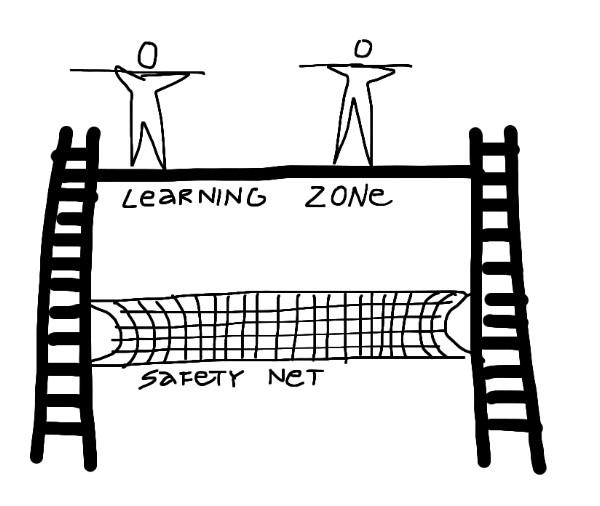Principals Report

Hello McGuire Parent’s and Friends,
Last week our staff and students from across the College enjoyed a number of great activities supporting book week and ending in the dress up celebrations on Friday. Thank you all for your enthusiasm and support of our Book Week celebrations – a special thanks to Nicole Craighead and helpers for organising activities across the week– excellent effort!
Our College is now in planning mode for 2019 – we are expecting a large number of Year 7 students and families to join our community and we are currently working towards refurbishing parts of our F-wing building to support the accommodation of an extra one hundred students. Next week we will begin advertising staffing positions for 2019 and beyond.
We are excited to confirm that the four Shepparton secondary schools will come together for a school-closure day led by educational consultant and author Tracey Ezard – Wednesday the 21st of November.
Our professional learning day will be built around the following theme, learning intentions and key questions.
Positioning Vision, Values and Culture for Student Improvement.
Learning Intentions:
- To begin building a shared platform for a strong team culture within an environment of professional and relational trust.
- To strengthen our team’s shared ability to support improvement of teaching and learning, and students' social and academic progress.
Key questions which will guide the learning:
- How will we ensure values, informed by the beliefs, story and witness of our current school communities, are developed collaboratively and strongly embedded into the everyday practices of the emerging school community?
- How will we enable leaders, teachers and students to co-design clear, short and long term goals aligned to the vision, values and culture of the emerging school community?
- How will current and future leaders articulate the vision and values and explain how these reflect the needs and aspirations of the emerging school community?
- How will we reference short and long-term school planning and resource decisions to the emerging school’s vision and goals?
- How will we actively engage with the whole school community and use a range of strategies to secure commitment to the emerging school’s vision?
- How will we ensure explicit targets for student outcomes focus the emerging school’s attention on core learning priorities?
- What strategies will need to be in place to address barriers to engagement?
- As we move forward how will we monitor how well our plans align with our vision and goals?
We look forward to sharing our shared learning as we progress, in the meantime the here’s a snippet of Tracey's work:
How to Solve Issues of Learning in Teams
Tracey Ezard: February 22, 2018
High performance teams are adept at the flexibility and agility required in fast past environments. High quality interactions that enable innovation and quick response also require a willingness to learn together – a collaborative learning space. This is a space that people create when they want to increase their understanding, strategies, thinking, and perspectives with others. This learning space enriches everyone involved in it. It works when everyone engages in curiosity and discovery rather than ‘tell interactions’ or reports. A tell interaction goes like this: ‘Tell me your problems, and I’ll tell you the solution’. But in the collaborative learning space, we use inquiry. We are never the teacher; we are a contributing participant in a process where everyone is learning from each other. We seek ideas and solutions together and apply them to our work. That only happens when we are open to learning. To move beyond our own thinking, instead we choose to be vulnerable and open with our colleagues. We step into learning.
High performing learning teams deliberately design and create this learning environment within their team. They want a process of collaborative inquiry. They work out what kind of environment encourages a focus on growth for all the members of the team, as well as the role that the team serves in the business. They openly focus on developing and growing quality skills, innovation and creativity.
In my experience, many organisations struggle to be in learning mode. Leaders might talk about skill development with individuals when it is ‘performance plan’ time, in isolation from the team (ie once to twice a year). I understand this default. It’s the default of ease. After all, it is easier to stay in this comfort zone than to create a team culture that is built on learning from each other. For decades, leaders have participated in leadership programs that do not even mention how to facilitate a learning environment in a team, so for many it is an approach they feel under-skilled to develop.
PUT IN THE SAFETY NETS
We have a fear of failure. That manifests when our culture focuses only on outcomes such as performance measures. Success and achievement become the only markers of recognition. We create a facade of invulnerability.
We become afraid that if we expose areas that need development, we will be cast in as ‘incompetent’. Fear rules the day: fear of judgment, failure, and being wrong. Instead of being willing to step into learning we close down and go back to the status quo.
If we put in place thinking, activities and processes that support us in a learning mode, then we can feel safer to be there. Behaviours that are conducive to safety are needed here. Feeling scared to speak up or share our thoughts does not create the environment for learning that an agile and thriving learning tribe needs to blossom. We need to feel that there are safety nets for stepping into the risk of being a learner. It becomes easier to be able to shift from the mindset of: “But that’s the way I’ve always done it.”
Alphabet Inc., the company that owns the global search engine Google, is known for its determination to push the status quo on how they work. The company set out to study the elements present in their most productive teams. Their two-year project, ‘Aristotle’, uncovered the fundamental concept to be ‘psychological safety, a model of teamwork in which members have a shared belief that it is safe to take risks and share a range of ideas without the fear of being humiliated’. Being the algorithm experts they are, they were looking for a list of characteristics common to these teams. Instead, the driving factor was that people felt safe to collaborate on their ideas. Amy Edmondson, Novartis Professor of Leadership and Management, Harvard Business School; Author, Teaming: How Organisations Learn, Innovate and Compete in the Knowledge Economy first coined this phrase of psychological safety.
Without this safety, the fear chemical cortisol increases in our brain and our preservation and survival reactions occur before we can consciously stop them. Behaviours such as aggression, shutting down, shutting up, nodding ‘yes’ but thinking ‘no’, are all examples of reactions to low-safety environments.
Focus on three areas to build your safety nets:
MIND – talk about being a learning team. What mindset do we need to bring to the table to be learners? Discuss trust and being open to learning.
MOMENT – create moments of learning. Make meetings an inquiry based agenda, posing curious questions on how you might individually or as a team approach an issue.
MOUTH – have dialogue that genuinely brings about learning. Use coaching techniques on each other to bring about inquiry and reflection.
See failure as opportunity
Teams who mindfully spend time on collaborative inquiry, approach their work with a unique lens to make sure that they keep open to learning. They see failure as a powerful tool for learning. Perfection is not their aim; it’s growth. They create an environment of inquiry rather than judgment and stretch the appetite for failure.
For a great insight into how an innovative company deals with failure and learning in general, look no further than Ed Catmull, President of Pixar Animation and author of Creativity, Inc: Overcoming the unseen forces that stand in the way of true inspiration, 2014. At the end of every movie production, rather than move onto the next project, they hold a postmortem. Whether the film was a success or failure, it doesn’t matter. This reflection time is just as important as the actual work.
There are five reasons Catmull poses for doing a postmortem:
1. Consolidate what everyone learned
Allows for learning to be done on the job and reflected upon with more focus and with the benefit of hindsight.
2. Teach others who weren’t there
A seize-the-day opportunity to pass on the learning to others, as well as challenge some thinking that may have gone on.
3. Stop resentment festering
Take the lid off a

